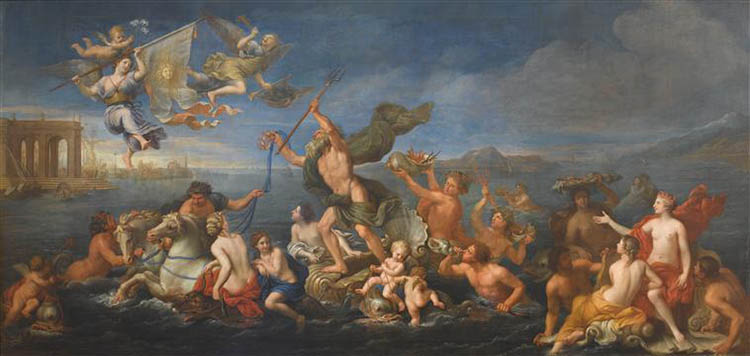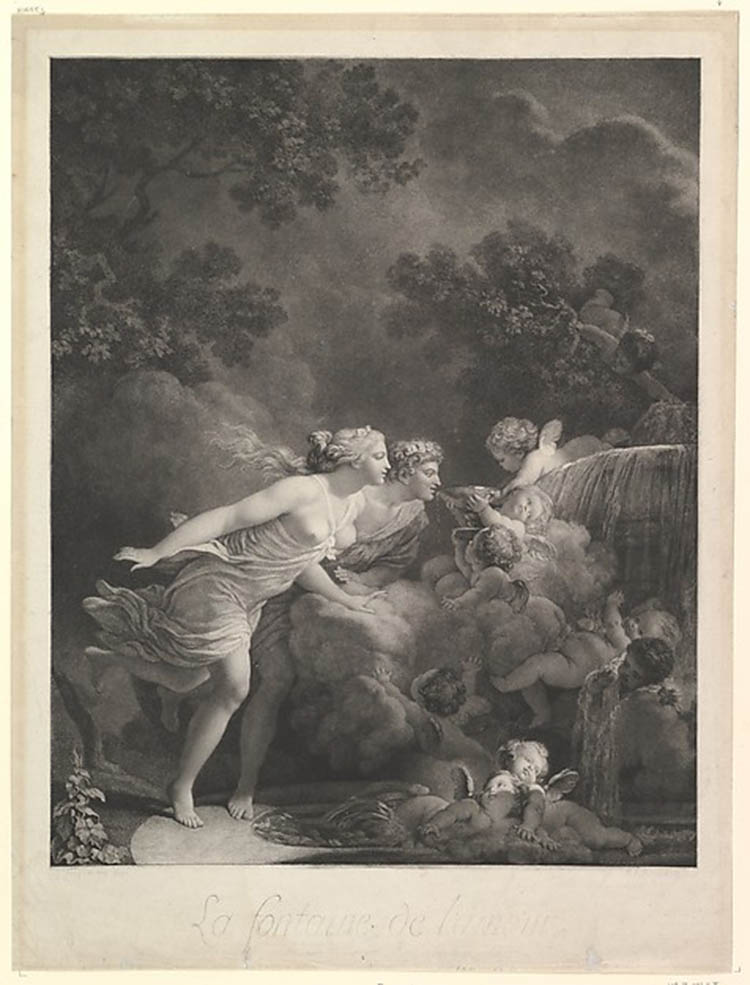Louis ARDISSON (1848-1930)
Download PDFLouis Ardisson was a sculptor, born in Nice in 1848. He belonged to the movement of academic artists who offered high quality Classical-style artistic production during the second half of the nineteenth century.
His work is known for his compositions reminiscent of eighteenth-century French taste, with illustrations of mythological and allegorical scenes. In this way, he wished to follow in the footsteps of the great masters by depicting themes which belonged to the “Great Genre”. This expression refers to monumental art illustrating biblical, historical, allegorical, or mythological themes. It derives from André Félibien's classification of artistic genres that he presented in a famous speech to the Academy in 1667:
« “One who paints landscapes perfectly is above another who only paints fruit, flowers or shells. One who paints living animals is more commendable than those who only represent things that are dead and without movement; and as the face of man is the most perfect work of God on Earth, hence it is certain that one who becomes an imitator of God by painting human figures is much more excellent than all the others… a Painter who only makes portraits does not yet have the highest perfection of Art and cannot claim the honor that the most skilled artists receive. To achieve this, one must pass from a single figure to the representation of several together; one must deal with History and Fable; one must depict great actions as historians do, or pleasant subject as Poets do; and to rise even higher, one must, through allegorical compositions, know how to cover the virtues of great men and the greatest mysteries under the cloak of Fables.” . »
To illustrate such scenes, one had to attain a certain amount of knowledge in order to meet the requirements of the time. Louis Ardisson acquired classical training with the painter Alexandre Bonnardel (1867-1942), live models professor at the École nationale supérieure des Beaux-Arts of Lyon.
Louis Ardisson regularly participated in the official Salon in Paris during the final quarter of the nineteenth century. He especially displayed low-reliefs made of boxwood:
- Salon of 1876: Le Printemps (Spring), after Le Barbier (1738-1826) and Les Amours forgerons (The Blacksmith Cupids), after C. Coypel.
- Salon of 1877: Petits Amours (Little Cupids), after François Boucher (1703-1770).
- Salon of 1880: Le Printemps (second version).
- Salon of 1881: La Fontaine d'Amour (The Fountain of Love), after Fragonard (1732-1806) (photo 15).
He also exhibited busts of patrons, like in the Salon of 1882: Portrait of Mme Quost and Portrait of M. L. L…, the first being a bust made out of terracotta and the second a plaster medallion.
Moreover, he participated in several World's Fairs , including the World's Fair of 1878 in Paris. He presented one of his wooden low-reliefs, Venus chez Vulcain (Venus and Vulcan), inspired by François Boucher (1703-1770) (photo 4). He won a bronze medal thanks to this work.
Ardisson was an active artist during the second half of the nineteenth century. He started in his hometown where he became a fine arts professor and Secretary of the “Cercle Artistique de Nice” (the Artistic Circle of Nice, 3, place Grimaldi), where he organized yearly exhibitions. He himself participated in these exhibitions, for example in January 1880 with a low-relief La Cible des Amours (The Cupids' Target), alongside well-known artists such as Gérôme (1824-1904), Meissonnier (1815-1891), and Gustave Doré (1832-1883).
His relations were not limited to his hometown. In the United States, in 1897, Ardisson met Augustus Saint-Gaudens, and Irishman living in America who discovered his work (photo 5). This famous sculptor was known for his medallions, thus in 1905, President Theodore Roosevelt commissioned him to draw new American coins. It seems as though Louis Ardisson worked with him.
The sculptor was living in New York at the time thanks to the famous decorator Jules Allard . The latter opened a branch in New York in 1885 and brought Ardisson along with him to work on important commissions. For example, they worked together on large projects for wealthy industrial philanthropists, such as Edward Berwind, specifically for his residence on Fifth Avenue and for The Elms in Newport Beach. In this same seaside town, they worked on the marvelous Ballroom of the Marble House created for the extremely wealthy Vanderbilts (photo 1). These collaborations illustrate the great American enthusiasm of the time for eighteenth-century flamboyant French art.
Ardisson created two monumental low-reliefs with representations of Neptune for the Marble House and the Fifth Avenue Berwind estate (photos 2 and 6). This work exemplifies the sculptor's style through its theme as well as its iconography.
The sizable low-relief in Statuary Carrara marble by Ardisson for the Berwind house on Fifth Avenue decks a monumental fireplace adorned with a Caryatid and an Atlante ; follow this link to see this extraordinary fireplace on our website.
Theme
Both of these works are inspired by classical mythology. In order to emphasize the greatness of Alva and William Vanderbilt, he thought of Neptune & Amphitrite and then, for the Berwinds, of the Triumph of Neptune. Master of the seas, this ancient god is known for his fortune, his courage, and his strength. He is most commonly depicted on a chariot surrounded by real and mythological marine creatures, like Tritons and seahorses.
Historically, important dignitaries have often been associated to Neptune. In this way, in 1706 (or 1707), the count of Toulouse had wished for the painter Boullogne the Elder to make a representation of the marine procession for the King's bedchamber in the Château de Rambouillet, in a painting called Neptune amenant Amphitrite dans un char marin (Neptune bringing Amphitrite in his marine chariot) (photo 7).
Iconography
Both of these works of art correspond to classical academic iconography. Thus, Neptune is recognizable through his attributes: his beard and his trident. The vigor of the elements surrounding him emphasize his divine strength by the shaking waves and his windblown hair and beard.
Wanting to follow the traditions of Art History, his piece is inspired by different artists from the Versailles era:
- Pierre Mignard (1612-1695), a famous court painter for Louis XIV, clearly had an important influence on the Berwind fireplace's Neptune. Mignard's preparatory drawing has the same chariot wheels as the ones on the fireplace: Neptune offre à Colbert la domination des mers (Neptune offers Colbert supremacy over the seas) (photo 8).
It is a rare iconography, because Neptune is usually presented on a shell, which is the version he preferred for the Vanderbilts'. Pierre Mignard had made a similar choice for another version: Neptune offrant ses richesses à la France (Neptune bestowing his riches upon France) (photo 9).
- For the Vanderbilt version, the artist was undoubtedly inspired by the ceiling of the Apollo Gallery at the Louvre (photo 10). The very rich decoration that frames the composition is perfectly consistent with the flamboyancy of the eighteenth century.
- The sculptor was often inspired by Boucher (1703-1770). The cherubs flying above the chariot in the Berwind version are very similar to those in Boucher's painting Neptune poursuivant la nymphe Amymone (Neptune following the nymph Amymone) (photo 11).
- Another illustration of this tale most likely had a certain influence on the artist: the preparatory painting for the Tenture des Amours des dieux (Tapestry of the Loving of the Gods) by Carle Van Loo (1705-1765), which was exhibited at the museum of Fine Arts of Nice, where Ardisson taught.
- He does not only refer to paintings, monumental sculpture also being an inspiring source: certain aspects of the Berwind fireplace low-relief recall the Neptune created by Coysevox's (1640-1720) for the Parc de Marly commissioned for Louis XIV (photo 13). The Triumph of Neptune and Amphitrite created for the Neptune Fountain of Versailles by Adam the Elder (1700-1759), also commissioned by Louis XIV, is comparable to the version made for the Vanderbilts (photo 14).
This theme seems to have fascinated Americans, because the 1981 donation to the Met by gallery owner Harry Sperling (1906-1971) included a drawing by Gabriel-François Doyen (1726-1806) also based on the mythological theme (photo 16).
On the Berwind mantel, there is a decorative pattern of cherubs that symbolizes heat (photo 18). This iconography originates from allegories of Winter that were very common at the beginning of the eighteenth century (photo 17).
Bibliography
F.G. DUMAS, Salon de 1879, illustrated catalog, Paris, Ed. L. Baschet & British and foreign, 1879, p. 71.
Victor CHAMPIER (1851-1929), L'année artistique - Années 1878-82 (The Artistic Year), Éd. A. Quantin, Paris, 1879-1882, 4 vol., p.157-158.
Catherine GAICH, Anne DOPFFER, Alain DAGUERRE de HUREAUX et John DRYFHOUT, Augustus Saint-Gaudens, 1848-1907: A Master of American Sculpture, Musée des Augustins, 1999.
Émile Bellier de La CHAVIGNERIE (1821-1871) puis Louis AUVRAY (1810-1890), Dictionnaire général des artistes de l'École française depuis l'origine des arts du dessin jusqu'à nos jours : architectes, peintres, sculpteurs, graveurs et lithographes (General Dictionary of the artists of the French School from the beginning of the arts of drawing to today: architects, painters, sculptors, engravers, and lithographers), Éd. Librairie Renouard, Paris, 1882-1885, 3 vol, p.18.





















